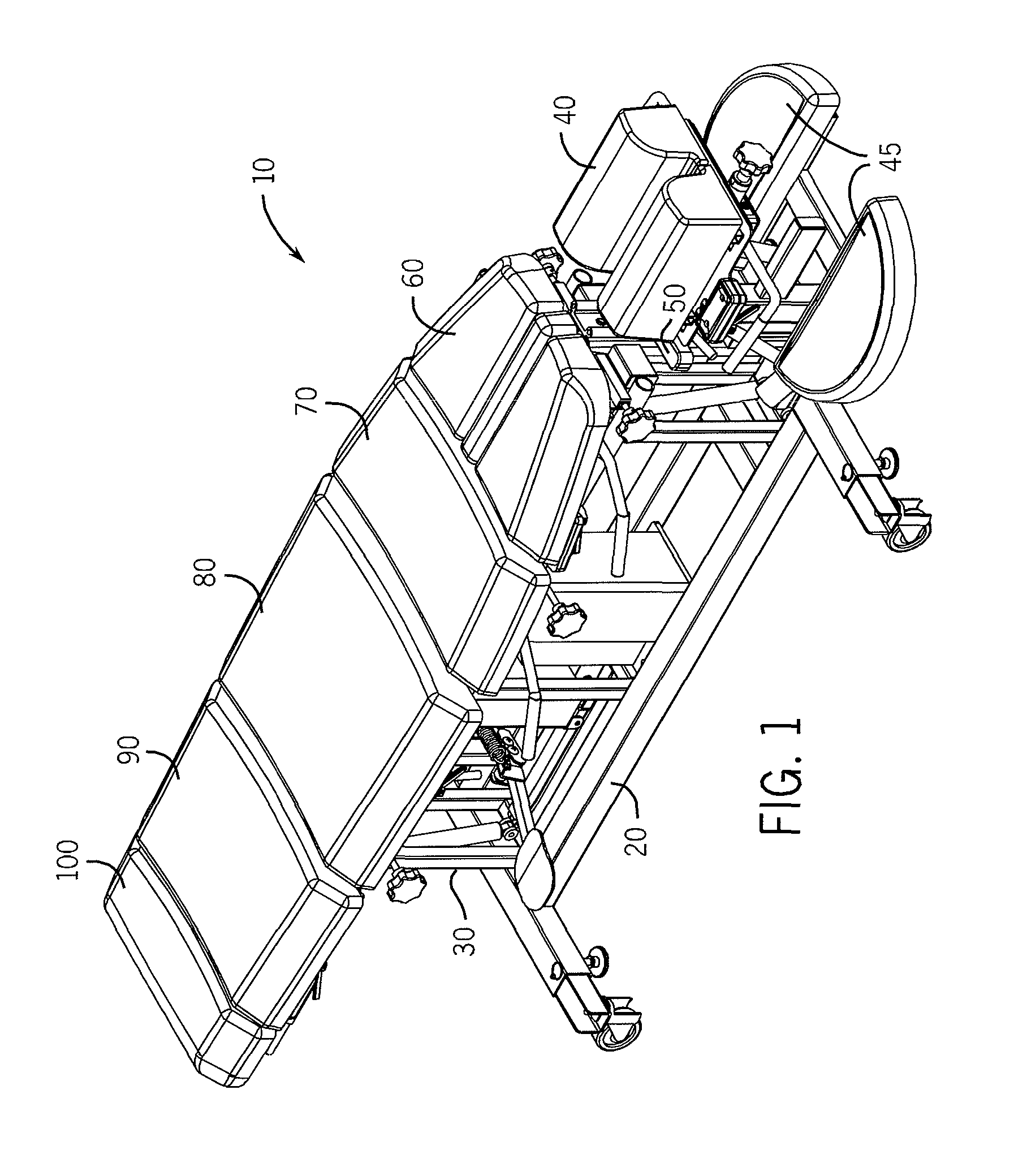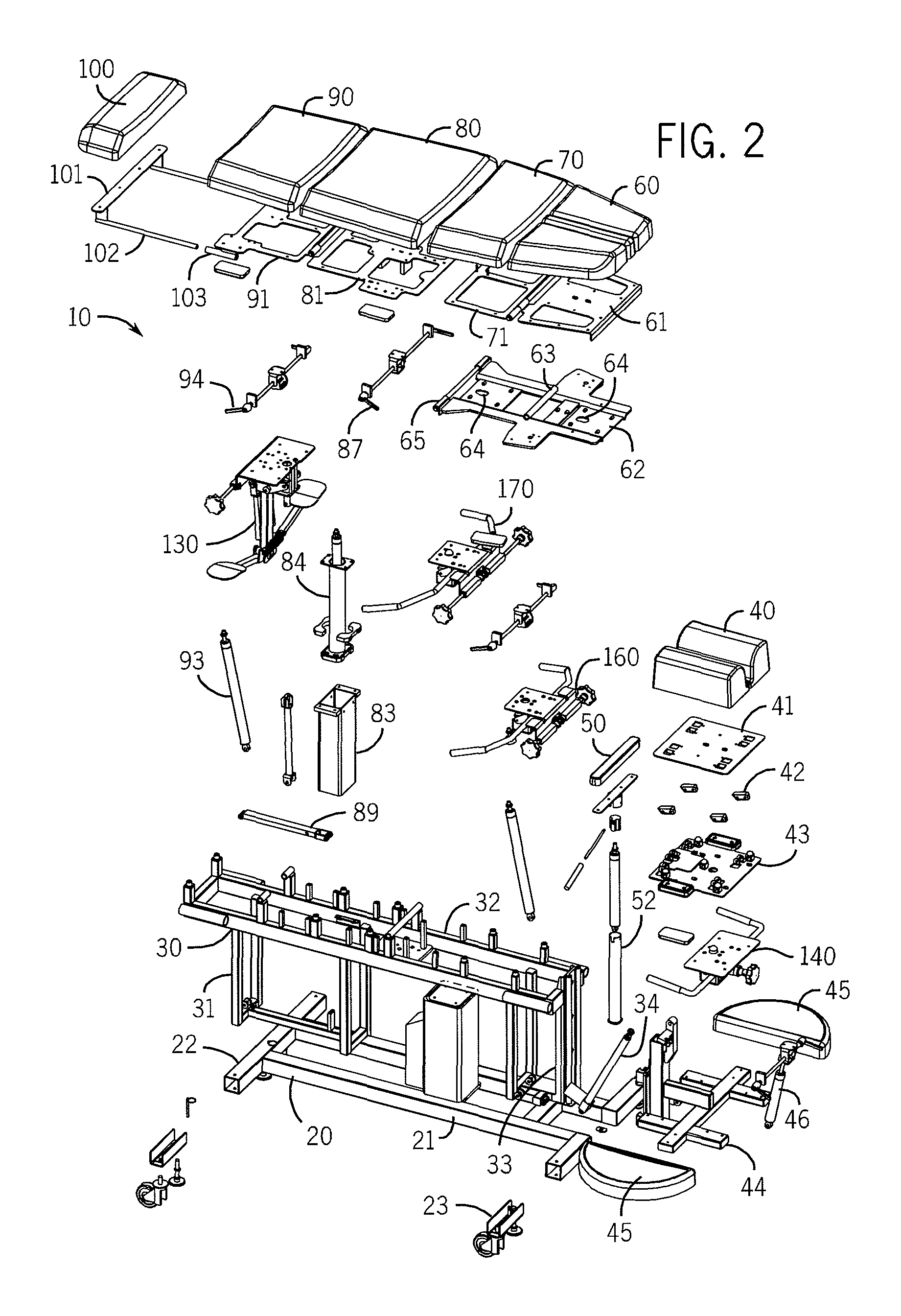Chiropractic posture correction tool
a posture correction and tool technology, applied in the field of chiropractic health care, can solve the problems of limited use, lack of functionalities of the chiropractic table that could assist the chiropractor, and often frustrated chiropractors with lack of postural correction, so as to achieve maximal neurological correction and stress-free
- Summary
- Abstract
- Description
- Claims
- Application Information
AI Technical Summary
Benefits of technology
Problems solved by technology
Method used
Image
Examples
Embodiment Construction
[0050]Referring now to the drawings in detail, wherein like numbered elements refer to like elements throughout, FIGS. 1 through 4 illustrate a representative structure, generally identified 10, which is a preferred embodiment of a posture correction tool table that is constructed in accordance with the present invention. Generally speaking, the table 10 comprises a plurality of pads that are mounted onto a superstructure. It is this plurality of pads that support the patient during chiropractic treatment. More specifically, and moving from that forward-most point of the table 10 where the patient's head (not shown) would rest, it will be seen that the pads comprise a head pad 40, a cervical pad 50, a composite thoracic pad 60, a lumbar pad 70, a pelvic pad 80, a leg pad 90, and a foot pad 100. Additionally, two semi-circular shaped arm pads 45 are located and mounted to either side of the head pad 40. This allows the patient, who is supported in the prone position by the table 10, ...
PUM
 Login to View More
Login to View More Abstract
Description
Claims
Application Information
 Login to View More
Login to View More - R&D
- Intellectual Property
- Life Sciences
- Materials
- Tech Scout
- Unparalleled Data Quality
- Higher Quality Content
- 60% Fewer Hallucinations
Browse by: Latest US Patents, China's latest patents, Technical Efficacy Thesaurus, Application Domain, Technology Topic, Popular Technical Reports.
© 2025 PatSnap. All rights reserved.Legal|Privacy policy|Modern Slavery Act Transparency Statement|Sitemap|About US| Contact US: help@patsnap.com



